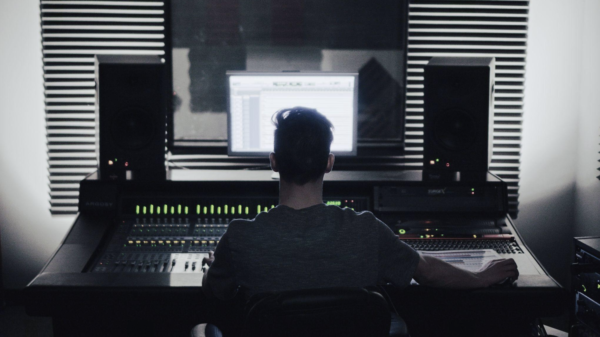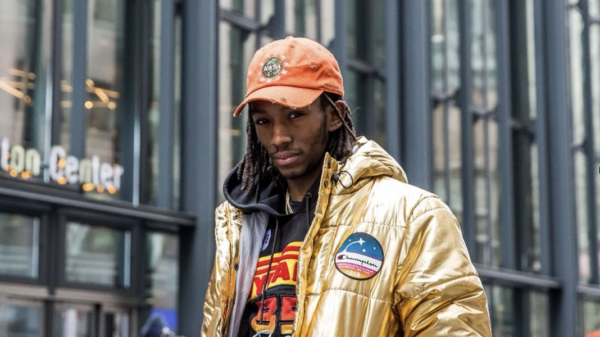In 1973, the world saw George Harrison as the Beatle who was winning the break-up. He became a solo superstar with All Things Must Pass, his big triple-vinyl extravaganza, then his noble and star-studded Concert For Bangla Desh. He’d finally broken free of the Fabs and gotten everything he’d ever wanted. Right? Well, not exactly. George turned his spiritual crisis into Living in the Material World, his slept-on masterpiece — the most profoundly weird album of his life.
It might seem strange they didn’t think of doing this new edition of the album last year, in time for its 50th anniversary, but somehow that’s fitting for this long-overlooked album, as a document of George in all his mixed-up confusion. It’s been overshadowed by All Things Must Pass, which just keeps getting more revered over the decades, while Material World has been sitting there abandoned in the Red Rose Speedway/Live Peace in Toronto/Ringo the IVth twilight zone. As my editor Jon Dolan has so brilliant put it, it got “wrongly reverse-engineered into Gone Troppo.” The Harrison estate never seemed over-eager to acknowledge it. But its time has finally come.
George steps back from the epic scale of All Things Must Pass. It’s a band album, with the second-best band he ever had. It’s just a core of trusted mates: Klaus Voorman on bass, Jim Keltner on drums, Nicky Hopkins on piano, Gary Wright on organ. The sound is intimate, human-size, with the gorgeous simplicity of “Be Here Now,” “Don’t Let Me Wait Too Long,” and the Number One hit “Give Me Love (Give Me Peace On Earth).”
Material World finally gets its long-overdue reappreciation in this definitive new edition. It’s remixed by engineer Paul Hicks, who did such a bang-up job on the 2019 All Things Must Pass box, with a bonus disc of top-notch alternate takes. The Super Deluxe Edition is lavishly packaged with a Blu-Ray disc in Dolby Atmos sound, a 60-page book, and a 7-inch single of “Sunshine Life For Me (Sail Away Raymond),” which he gave to Ringo for his self-titled 1973 album — George and Ringo kick up their heels in a sea chanty featuring The Band’s Levon Helm, Robbie Robertson, Garth Hudson, and Rick Danko.
Editor’s picks
Harrison produced himself for the first time, stretching out on slide. He returned to the sitar, the instrument that started him down his spiritual path, but one he hadn’t played in years. It’s his proto-indie-rock singer-songwriter album — at times it could pass for Elliott Smith or Pavement, especially the Wowee Zowee vibe of “The Day The World Gets ‘Round.”
But he was in low spirits at this point. For all his religious moralizing, his private life was sex-and-drugs chaos. After his hard work for Bangla Desh, he felt betrayed. The funds got bungled by the money men he’d trusted, leaving him on the hook for a million pounds in taxes. Then there was his never-ending Beatles legal mess, which inspired “Sue Me, Sue You Blues.”
But on the most personal level, his beloved mother Louise died in July 1970. You can hear her loss all over the music, especially the gorgeous hymn “Be Here Now,” the sound of a grief-ravaged son, with the mantra, “It’s not like it was before.” The sitar gives that haunting Indian drone effect. But it’s also a very Southern California song, written in the Hollywood Hills, with a tinge of Neil Young in the guitar. Like John in “Julia” or Paul in “Let It Be,” he made some of his most soulful music in his hour of darkness.
The bonus disc is sheer delight — no new songs, unlike the treasure trove from the 2019 All Things Must Pass box, but previously unreleased alternate takes. “Be Here Now (Take 8)” is breathtaking — it’s minimal and dramatic, no sitar, mostly just George on acoustic with Nicky Hopkins on piano. Jim Keltner adds the occasional boom or cymbal crash, but it’s the only way you’d even know he was in the room. “Tasteful,” as they say. The outtakes drive home the fact that this is the only time in George’s life he was a bandleader, working with a tight unit of kindred spirits.
Related Content
He sounds refreshed in the sparkling acoustic “Don’t Let Me Wait Too Long”—his voice is so strong, from basically the last moment before his throat broke down on him. “Who Can See It” is much livelier than the album version — and it’s “Take 93”? Guess George didn’t need Paul around to create his own White Album-style studio chaos. But he gets a spiritual boost from his band.
There’s also the funky B-side “Miss O’Dell,” which should have made the album. George gossips about his old friend and Apple comrade Chris O’Dell, laughing too hard to sing the second verse, over Keltner’s cowbell hook. He casually drops the phone number “Garston 6922,” Paul’s old number from back home in Liverpool. It’s the closest this album could have come to the breezy rock & roll fun of “Apple Scruffs” or “Wah Wah.” But he left it off — it was too much fun to fit his religious mission.
Trending Stories
Material World was a commercial smash at the time, but it soon got left behind by history. Dark Horse got rushed out a year later, the first album from a rock star suffering a full-blown case of laryngitis — a fatal cocktail of preach-and-screech vocals with booze-and-snooze studio torpor. Why didn’t Dark Horse get pushed back until George’s voice recovered? Because he was desperate to capitalize on his disastrous 1974 solo tour, which he also wasn’t ready for. It did so much damage to his rep, wiping out his hard-earned good will from the All Things/Concert for Bangla Desh era, it dragged Material World down with it. The songs vanished from the radio. The public decided that George blew it all on one classic solo album, then fell off.
But so much light and life came back into his music after he met his wife Olivia Arias. When his career rebounded in the late Eighties, people were so grateful to have George back, they decided to forgive and forget most of his 1970s output after All Things Must Pass. But that meant sleeping on some great music. And Living in the Material World is full of George Harrison moments worth rediscovering.




























